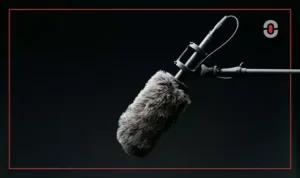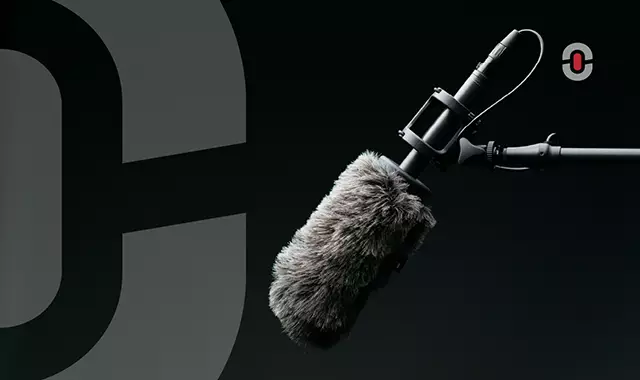AI Overview
| Section | Summary |
| Topic | Voice Cloning & AI Dubbing: Transforming Multilingual Audio Content |
| Purpose | To explain how AI voice technologies enable faster, cheaper, and more scalable multilingual content creation—and how to use them effectively and ethically. |
| Key Insight | AI dubbing and voice cloning drastically reduce production time and cost while maintaining brand voice across languages—unlocking global scalability for content. |
| Best Use Case | Ideal for companies localizing training videos, e-learning, marketing campaigns, entertainment content, or games across multiple languages at scale. |
| Risk Warning | Limitations include emotional nuance, cultural accuracy, and ethical/legal concerns around voice rights and deepfake misuse. |
| Pro Tip | Blend AI efficiency with human expertise—like linguists and audio engineers—to ensure the final result is culturally authentic and legally compliant. |
In today’s global marketplace, the pressure to connect with audiences in their own languages has never been greater. From streaming giants and e-learning platforms to gaming studios and marketing agencies, everyone’s racing to localize audio and video content—fast. But until recently, creating high-quality multilingual audio meant labor-intensive dubbing sessions and hefty budgets.
Enter voice cloning and AI dubbing—two game-changing technologies that promise to rewrite the rules of multilingual content creation. In this article, we’ll break down how these tools work, why they’re shaking up entire industries, and where they’re headed next. We’ll also explore the caveats—because while these AI voices are impressive, they’re not magic. Let’s jump in.
What Exactly Are Voice Cloning and AI Dubbing?
Let’s start with the basics:
Voice cloning creates a synthetic replica of a person’s voice using AI. Think of it like a vocal fingerprint that can read any script in any language while still sounding like the original speaker. Behind the scenes, this relies on cutting-edge text-to-speech (TTS) models and neural networks trained to capture every nuance of a voice—down to the pauses and inflections.
AI dubbing takes that synthetic voice and uses it to replace the original audio in another language. It’s an automated approach to what used to be painstaking, manual work—casting voice actors, matching lip movements, and recording in studios. AI dubbing handles much of that heavy lifting by leveraging deep learning models and integrating large language models (LLMs) to adapt translations for context and tone.
In contrast, traditional dubbing and voiceovers require human actors, multiple takes, and endless editing. With AI-generated versions, brands can localize content on an unprecedented scale—often in days, not weeks.
Why Should We Care? The Power for Multilingual Content
If you’ve ever sat through a meeting where someone suggests, “Let’s just subtitle it!” you know the struggle: subtitles only go so far. Audio localization—getting voices that sound right in every language—matters deeply for engagement and brand impact.
Here’s what makes AI dubbing and voice cloning so compelling:
The massive time and cost savings compared to traditional dubbing—instead of booking voice actors, expensive studio sessions, and countless retakes, synthetic voice technology and AI voiceover tools make it possible to generate professional-quality audio in multiple languages quickly and affordably.
This has huge implications for teams looking to scale video, audio, and e-learning content across global markets. Localized audio content—once a luxury for big brands—can now be created by even smaller teams without sacrificing quality or blowing through budgets.
These AI voice solutions also offer a faster path to market entry for global brands. No more waiting weeks for multilingual voiceovers. With text-to-speech dubbing and AI translation tools, companies can launch content in new regions in days—giving them a powerful edge.
And there’s another huge benefit: personalization at scale. Thanks to neural voice cloning and personalized voice AI, you can keep your brand’s or spokesperson’s unique vocal identity consistent across languages. Whether it’s your CEO’s keynote or your brand’s signature training modules, you can ensure your original tone and style come through—no matter what language you’re speaking.
Real-World Applications: How Industries Are Using It
This isn’t just about slick marketing videos—it’s changing the game across entire industries:
- Media & Entertainment
From blockbuster trailers to binge-worthy streaming shows, studios are experimenting with AI dubbing to reach more viewers—without losing that cinematic magic. - E-Learning
Training videos, how-to guides, and educational platforms are using AI voiceovers to quickly roll out multilingual versions of courses. No more budget bottlenecks when adding new languages. - Gaming
Developers can localize character voices across languages faster, creating immersive experiences for players worldwide—without sacrificing character identity. - Marketing & Advertising
Marketers are adapting voiceovers to different regions on the fly—no need to juggle multiple voice actors for every single campaign. - Customer Support
AI-generated voice responses in chatbots and IVR systems mean customers can get the help they need in their native language—no more “press 1 for English” frustrations.
The Big Benefits
Let’s break down why this tech is getting so much buzz:

- Speed – AI voices can be generated in hours, not days. That’s a game-changer for teams juggling tight deadlines.
- Lower Costs – No more huge studio bills or endless rounds of voice actor casting.
- Consistency – When your voice sounds the same across languages, you build trust and brand recognition.
- Scalability – Whether you’re localizing three videos or 3,000, AI dubbing scales to meet the need.
- Accessibility – Even small teams can create professional-grade multilingual content without needing a Hollywood budget.
But It’s Not All Smooth Sailing: Limitations and Ethical Questions
Here’s the thing: while AI-generated voices are mind-blowingly realistic, they’re still not perfect.
- Emotional Nuance – AI voices can sometimes feel a bit flat or robotic, missing those subtle shifts in tone that only a human actor can deliver.
- Cultural Context – AI might not catch the difference between a heartfelt expression and a sarcastic remark—or nail the local humor that makes your script sparkle.
- Ethical and Legal Concerns – Unauthorized voice clones can be a serious violation—and there’s growing scrutiny around deepfakes and misuse.
- Voice Rights – Whose voice is it, anyway? When you clone a voice, you’re stepping into a tricky world of ownership and usage rights. Getting this wrong can lead to legal headaches.
Human-in-the-Loop: Combining AI With Expert Review
Here’s the secret sauce: AI + human expertise. While AI can do the first draft, it still needs a human touch to ensure quality and authenticity.
Linguists and Reviewers – Language experts refine the script, ensuring it’s not just technically correct but also culturally relevant.
Sound Designers – Audio engineers tweak the final voice to make it feel natural, warm, and engaging.
Quality Assurance – Localization companies like 1-StopAsia bring that final polish—catching errors and ensuring compliance with voice rights and regional regulations.
The result? AI does the heavy lifting, while humans make sure the final product hits all the right notes.
Peeking Into the Future: What’s Next?
Voice cloning and AI dubbing are evolving fast—here’s a sneak peek at where things are headed:
Emotion-Enhanced AI Voices – More sophisticated AI models will soon capture not just words but feelings—adding authenticity and warmth.
Real-Time Dubbing – Imagine hopping on a video call and hearing everyone in your language, in real time. That’s closer than you think.
Personalized Voice Assistants – Picture a virtual assistant that sounds like your brand’s spokesperson—instantly recognizable and deeply engaging.
LLM-Powered Conversations – When voice tech meets large language models, expect smarter, more natural-sounding AI dialogues—like having a personal interpreter on demand.
Conclusion
Voice cloning and AI dubbing aren’t just fancy buzzwords—they’re powerful tools that can help global businesses and content creators bring their stories to life across languages and cultures. But here’s the thing: they’re not here to replace humans. They’re here to make our jobs easier—amplifying our voices, not replacing them.
For brands and content teams eager to go global, the key is blending AI’s speed and scale with the creative, cultural, and ethical insights of human experts. Partner with localization pros who understand both the tech and the storytelling—and you’ll unlock a world of possibilities.
Ready to take your multilingual content to the next level? Partnering with experts like 1-StopAsia—who blend AI voice technology with deep localization know-how—can make all the difference.
